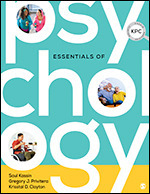You are in: South America
Change location
You are here
Can Culture Influence Emotion?
Activity 3: What's your prediction? Can Culture Influence Emotion?
Share this activity with your students by simply copying and pasting the URL for this page into your LMS.
- Time frame: Approximately 30 Minutes
- Setting: Online or face-to-face
- Source: Chapter 11 Motivation and Emotion
from Essentials of Psychology by Saul Kassin, Gregory J. Privitera, and Krisstal D. Clayton - Learning Objective: Examine how emotions, including happiness and motivation, are displayed across cultures.
Can Culture Influence Emotion?
The Situation

Imagine that you are working as part of a research team that is studying cultural influences. The goal of the project is to examine the effects of culture on the way people interpret facial expressions. Do human beings all over the world show joy, sadness, and other emotions in the same way, or are there differences in facial expressions as there are in the languages we speak?
To answer this question, you collect portrait photographs of adult men and women smiling, frowning, pouting, and expressing other emotions on the face. Your goal is to get pictures of people experiencing, or pretending to experience, six emotional states: happiness, sadness, anger, fear, surprise, and disgust. Then you contact colleagues from other countries and arrange for them to translate the words and show the pictures to natives of their culture. In all, you’re able to test more than 500 people from Estonia, Germany, Greece, Hong Kong, Italy, Japan, Scotland, Sumatra, Turkey, and the United States.
The testing procedure is straightforward. Your experimenters schedule “observers” for group sessions. In total, 18 pictures are shown on slides, for 10 seconds each and in random order, and each slide depicts one of the six emotions. Participants are given a response sheet on which they are asked to check off the emotion being displayed in each picture.
Make a Prediction
The first question raised from the data you collect in this study is: Are emotions universally recognized, or are there cultural differences? In other words, to what extent do people in general (as represented in the 10 cultures) agree on the emotions displayed by various facial expressions?
The second question is: Do some expressions elicit a higher agreement rate across cultures than others? As you prepare to analyze the results, what are your hypotheses? The table below lists the six emotions represented in this study. On a scale from 0 to 100 percent, what percentage of the participants, across all 10 cultures, do you think recognized each type of emotion?
Happiness ____%
Sadness ____%
Anger ____%
Fear ____%
Surprise ____%
Disgust ____%
The Results
You receive a total of 547 response forms in the mail, tally the results, and notice two key findings. Look at the table below and you’ll find, first, that a majority of observers in all cultures interpreted facial expressions in the same way. The total agreement rate was far from perfect, but, over all cultures and emotions, it was quite high, at 82 percent. The second finding is that some emotions elicited more agreement than others. As shown, people in general were most likely to agree on expressions of happiness and surprise and least likely to agree on anger and disgust.
Happiness 90%
Sadness 85%
Anger 74%
Fear 80%
Surprise 90%
Disgust 73%
What Does It All Mean?
When Paul Ekman and his colleagues (1987) conducted the study just described, they were addressing a recurring debate in psychology concerning the “universality” of emotional states. On the one hand, emotion is so basic to the human experience that one would expect people all over the world to express their feelings in similar ways. On the other hand, there are cultural differences in the way people think about and interpret each other’s behavior. Both positions are partly correct. Ekman’s cross-cultural study showed that certain facial expressions are similarly interpreted by people all over the world. But what about other aspects of emotion? There is no simple answer. We’ll learn in this course that emotions are a product of physiological, behavioral, and cognitive factors and that they are deeply involved in the motivations that underlie human behavior.
Next - Activity 4: How Do We Form Impressions of Others?


